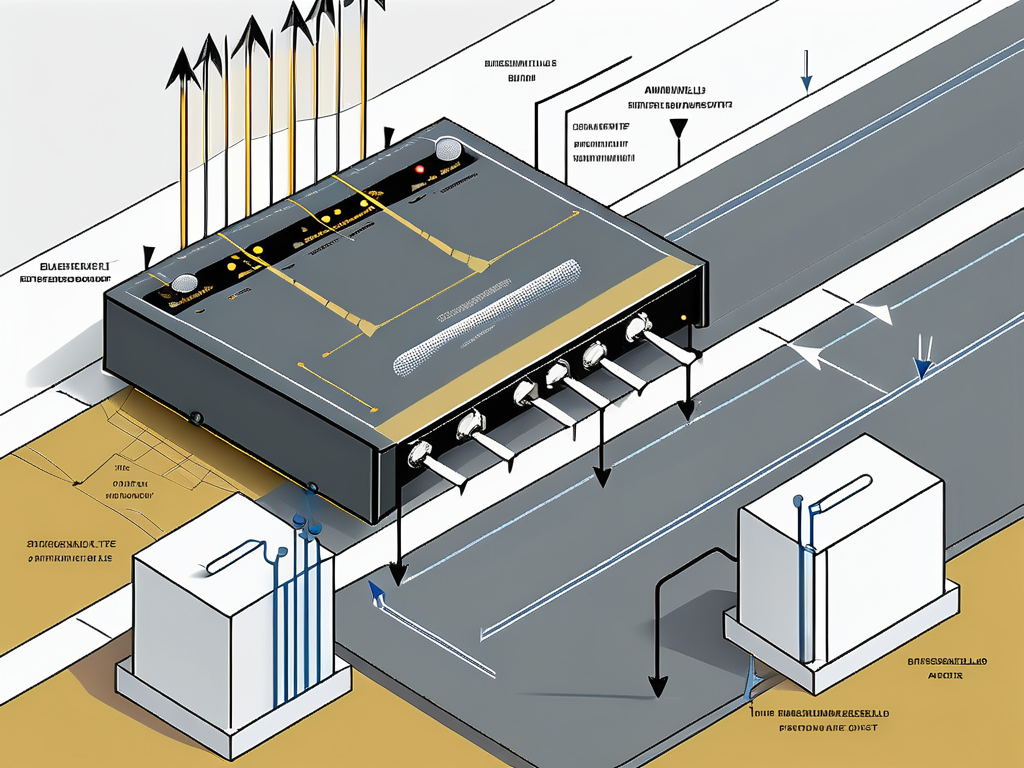
Understanding the Basics: What is a BDA (Bi-Directional Amplifier) Site Survey?
In the realm of wireless communication, the Bi-Directional Amplifier (BDA) plays a pivotal role. It is a device that enhances the strength of radio signals, ensuring seamless communication in buildings, especially in areas where signals are weak or non-existent. A BDA site survey is an essential step in the process of installing a BDA system. This comprehensive guide will delve into the intricacies of a BDA site survey, its importance, and how it is conducted.
What is a BDA (Bi-Directional Amplifier)?
A Bi-Directional Amplifier, or BDA, is a device that boosts wireless signals, particularly in areas where these signals are weak or non-existent. It is designed to improve radio frequency (RF) signal coverage in buildings, tunnels, parking structures, and other areas where signal strength can be compromised.
BDAs are critical in ensuring reliable communication for emergency responders. They enhance the signals of two-way radios, which are often used by fire, police, and EMS personnel. Without a BDA, these signals can be obstructed by building materials, leading to communication failures during emergencies.
What is a BDA Site Survey?
A BDA site survey is an in-depth assessment conducted to determine the need for a BDA system within a building or facility. The survey identifies areas with weak or non-existent signals and provides the necessary data to design an effective BDA system.
The survey involves testing signal strength throughout the building, identifying potential obstructions, and determining the optimal locations for installing the BDA and its associated antennas. The goal is to ensure that the BDA system provides comprehensive coverage, enabling reliable communication throughout the facility.
Why is a BDA Site Survey Important?
A BDA site survey is a critical step in ensuring that a BDA system is effective and compliant with local and national regulations. Without a proper site survey, a BDA system may not provide adequate coverage, leading to communication failures during emergencies.
Furthermore, a site survey helps to prevent costly mistakes during the installation process. By identifying the optimal locations for the BDA and antennas, the survey can help to minimize installation costs and ensure that the system is installed correctly the first time.
How is a BDA Site Survey Conducted?
A BDA site survey involves several steps, each designed to gather specific information about the building and its signal coverage needs. The process is typically conducted by a team of professionals who specialize in wireless communication systems, such as the experts at Pavion.
Initial Assessment
The first step in a BDA site survey is an initial assessment of the building. This involves reviewing the building’s blueprints and conducting a walk-through to identify potential signal obstructions, such as concrete walls, metal structures, and underground areas.
The team will also assess the building’s existing communication systems, such as the EST3 and EST4 fire control panels manufactured by Edwards. These systems are designed to unify fire alarm, smoke control, security, and mass notification systems, and their signals may need to be boosted by the BDA.
Signal Testing
Once the initial assessment is complete, the team will conduct signal testing throughout the building. This involves using specialized equipment to measure the strength of the existing signals and identify areas where the signals are weak or non-existent.
The results of the signal testing will provide the team with a clear picture of the building’s signal coverage needs. This information will be used to design the BDA system and determine the optimal locations for the BDA and antennas.
System Design
After the signal testing is complete, the team will use the data gathered to design the BDA system. This involves determining the type and number of BDAs needed, the optimal locations for the BDAs and antennas, and the best way to integrate the BDA system with the building’s existing communication systems.
The goal is to design a BDA system that provides comprehensive coverage, ensuring reliable communication throughout the building, even in areas where the signals were previously weak or non-existent.
Conclusion
A BDA site survey is an essential step in the process of installing a BDA system. It provides the necessary data to design an effective system, ensuring reliable communication throughout the building and compliance with local and national regulations.

At Pavion, we specialize in conducting BDA site surveys and designing BDA systems. Our team of experts has the knowledge and experience to ensure that your BDA system provides comprehensive coverage and meets all regulatory requirements. Contact us today to learn more about our services and how we can help you improve your building’s communication systems.
Ready to Enhance Your Communication Systems?
At Pavion, we understand the critical importance of clear and reliable communication within your organization. Whether you operate in the enterprise, healthcare, education, government, data center, or retail industries, our tailored fire, security, and integration solutions are designed to meet your unique needs. Take the first step towards transforming your building’s safety, security, and communication systems. Get a Free System Assessment today and experience our commitment to technology innovation and radical service.


